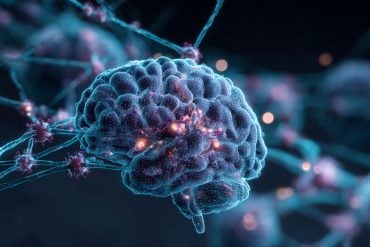Summary: Researchers have uncovered how morphine relieves pain by activating a specific group of neurons in the brain, termed the ‘morphine ensemble.’ These neurons, located in the rostral ventromedial medulla (RVM), connect to the spinal cord and inhibit pain signaling.
Understanding this pathway could help reduce the severe side effects of morphine, such as addiction and overdose. The findings also provide insights into the differences between pain relief and the euphoric effects of morphine.
Key Facts:
- Morphine relieves pain by activating a specific set of neurons in the RVM, known as the ‘morphine ensemble.’
- Inactivating these neurons eliminates morphine’s pain-relieving effects, while reactivating them restores pain relief.
- Deeper knowledge of these pathways could lead to safer pain management strategies and reduce morphine’s harmful side effects.
Source: Karolinska Institute
Morphine is a powerful painkiller that belongs to the group of opioids. It blocks signals in the pain pathways and also increases feelings of pleasure.
Morphine acts on several central and peripheral pain pathways in the body, but the neural processes behind the pain relief have not previously been fully understood.
Researchers have now investigated how morphine relieves pain using several new experimental approaches. They have exposed laboratory animals to morphine and then managed to “capture” the neurons that the morphine activated in the animals. This allowed the researchers to identify, classify and synthetically control the neurons in the neural pathways involved in pain relief.
Morphine activates a ‘morphine ensemble’
The researchers discovered that morphine affects a selected set of neurons in the brain in the part called the rostral ventromedial medulla (RVM). Together, these neurons form a kind of ‘morphine ensemble’. This is a group of neurons whose change in activity leads to pain relief.
When the researchers synthetically inactivated the neurons in this group, they completely abolished the effects of morphine on pain. When they reactivated the neurons, they were able to similarly recreate the pain relief.
A particular type of neuron that wires to the spinal cord was found to play a central role in the ‘morphine ensemble’. In the spinal cord, these neurons connect to so-called inhibitory neurons that slow down pain signaling in the spinal cord and thus prevent pain.
Potentially risky drug
When used as a medicine in healthcare, morphine has potentially very serious side effects in terms of addiction, abuse, overdose and death.
“It has been difficult to find strategies to treat pain without triggering these dangerous side effects,” says Patrik Ernfors, professor at the Department of Medical Biochemistry and Biophysics at Karolinska Institutet and the leader of the study.
He and his colleagues now hope that deeper knowledge of how morphine works in the body can help reduce side effects in the future.
“The study is important because knowledge of the neural pathway and cells may explain how morphine can have such a powerful pain-relieving effect. It may also provide information on how these processes differ from those that induce the feeling of euphoria, well-being and addiction,” says Patrik Ernfors.
In the next step, the researchers want to go further and investigate the reasons why the pain relief decreases more and more with long-term use of morphine.
The study has been funded by the Swedish Research Council, the European Research Council and the Knut and Alice Wallenberg Foundation.
About this pain and neuropharmacology research news
Author: Press Office
Source: Karolinska Institute
Contact: Press Office – Karolinska Institute
Image: The image is credited to Neuroscience News
Original Research: The findings will appear in Science







